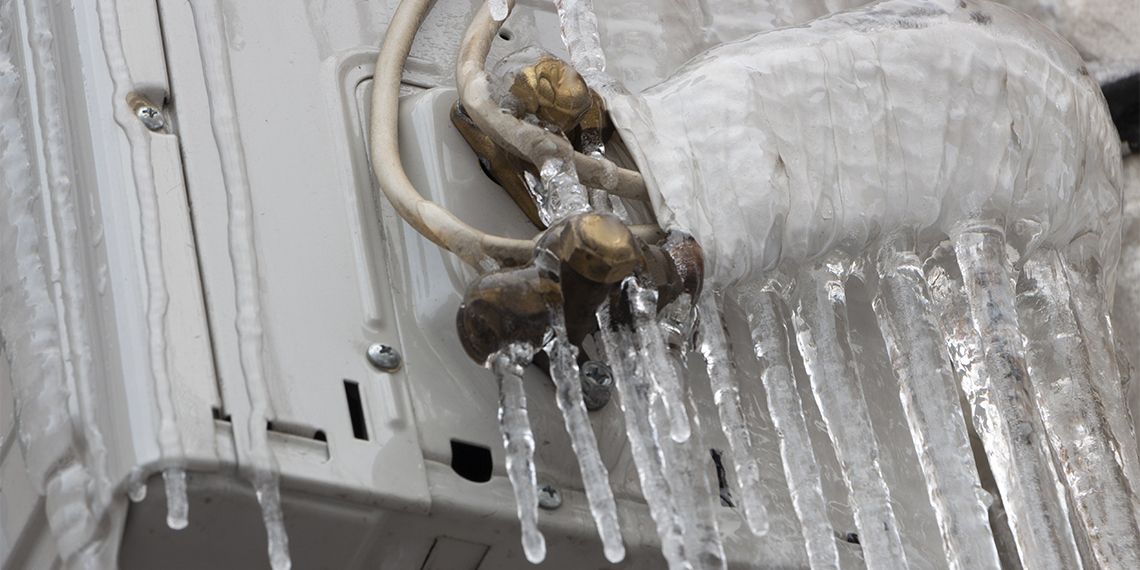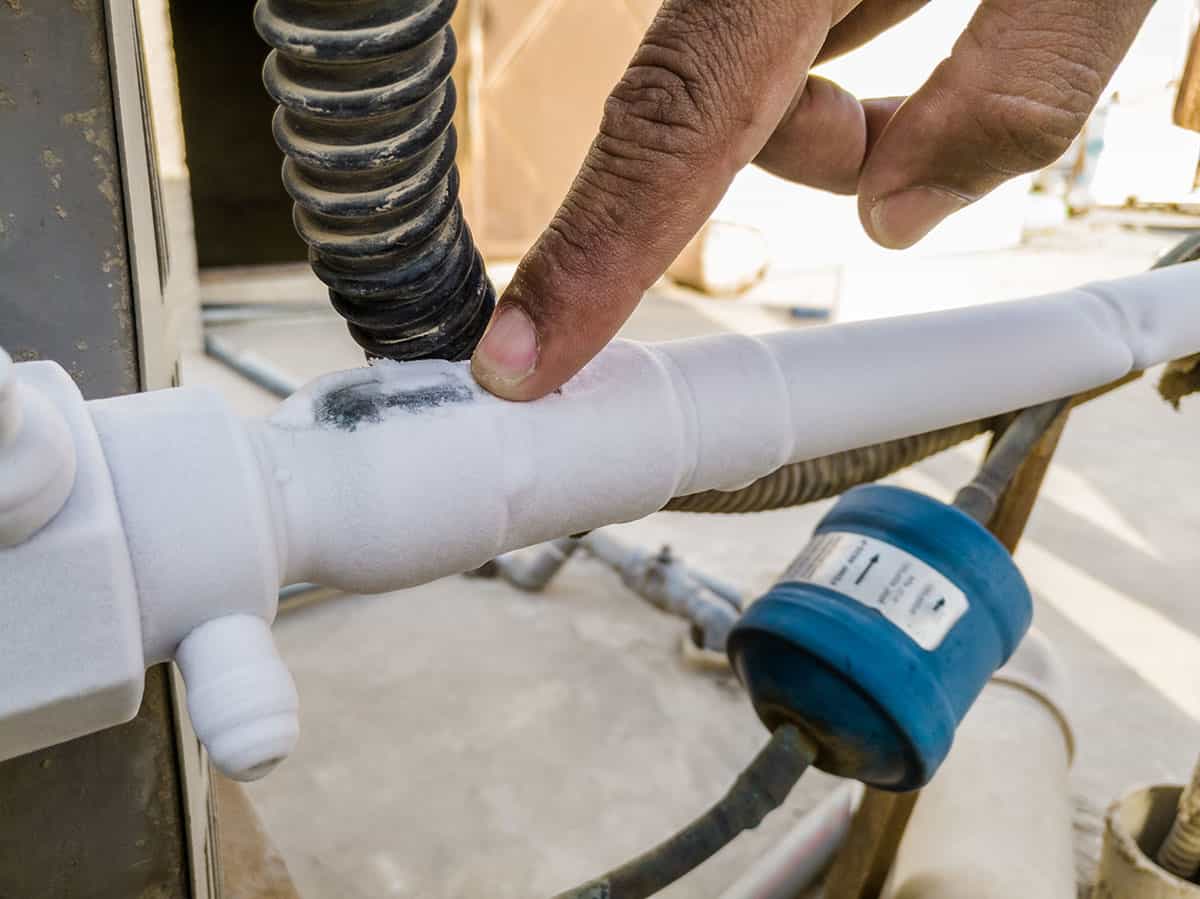Tips for Thawing a Frozen AC Pipe - Restoring Normal Functionality
Tips for Thawing a Frozen AC Pipe - Restoring Normal Functionality
Blog Article
Have you been interested in resources concerning How can I fix an air conditioner’s frozen pipe??

Introduction
Finding that your air conditioner pipeline is iced up can be concerning, especially during hot summer season when you rely upon your a/c unit one of the most. Recognizing what to do in such a situation is crucial to stop additional damage to your air conditioning system and guarantee your convenience inside your home.
Comprehending the Causes
A number of aspects can contribute to the freezing of an air conditioning pipeline. Comprehending these causes can help you address the issue effectively.
Absence of Airflow
One usual source of a frozen air conditioning pipe is inadequate airflow. When the airflow over the evaporator coil is limited, it can trigger the coil to go down below freezing temperature level, bring about ice development on the pipeline.
Low Refrigerant Levels
Insufficient cooling agent levels in your air conditioning system can also result in an icy pipeline. Reduced refrigerant levels can create the pressure in the system to drop, leading to the cold of wetness on the evaporator coil.
Cold Weather Conditions
In cooler environments, freezing temperatures outside can contribute to the cold of air conditioning pipes. If your AC system is not correctly protected or if there are leaks in the ductwork, cold air can penetrate the system, triggering the pipe to ice up.
Dirty Air Filters
Filthy or blocked air filters can restrict air movement in your air conditioning system, leading to numerous problems, including an icy pipe. It's essential to change or clean your air filterings system frequently to ensure proper airflow and protect against ice accumulation.
Signs of a Frozen Air Conditioner Pipe
Acknowledging the signs of an icy air conditioner pipe is critical for timely activity.
Decreased Airflow
If you see a significant reduction in air flow from your vents, it could show a frozen pipeline.
Ice Buildup on the Pipe
Visible ice buildup on the cooling agent line or the evaporator coil is a clear indication of an icy AC pipe.
Odd Sounds from the Unit
Uncommon sounds, such as hissing or gurgling, coming from your a/c device can signal that there's ice existing on the pipe.
Immediate Actions to Take
When faced with an icy AC pipe, it's vital to act quickly to avoid more damage to your air conditioning system.
Switching off the air conditioner
The initial step is to shut off your air conditioning unit to avoid the system from running and worsening the concern.
Checking for Blockages
Examine the location around the interior unit for any blockages that might be obstructing air movement, such as furniture or drapes.
Defrosting the Pipe
You can use gentle techniques like putting towels taken in cozy water around the frozen pipe to help thaw it slowly.
Safety nets
Taking safety nets can aid stay clear of future occurrences of a frozen air conditioning pipeline.
When DIY Methods Fail
If your efforts to thaw the pipeline or address various other issues are unsuccessful, it's time to contact an expert.
Value of Hiring a Professional HVAC Technician
A licensed HVAC service technician has the proficiency and tools necessary to diagnose and repair issues with your AC system securely and properly.
Normal Maintenance Checks
Set up normal upkeep talk to an expert HVAC service technician to make sure that your air conditioning system is running effectively.
Altering Air Filters
Routinely replace or cleanse your air filters to stop air movement limitations and preserve ideal performance.
Shielding Exposed Pipes
If your air conditioner pipelines are revealed to cool temperature levels, think about protecting them to avoid freezing during winter months.
Seeking Professional Help
If DIY methods fall short to solve the problem or if you're uncertain about just how to continue, it's best to look for help from a qualified HVAC professional.
Verdict
Handling a frozen air conditioner pipeline can be an aggravating experience, yet recognizing exactly how to respond can aid reduce damage and recover comfort to your home. By recognizing the reasons, identifying the signs, and taking punctual action, you can effectively attend to the issue and avoid future events.
G UP? HOW TO FIX IT?
It happens all over America. And the rest of the world probably. It’s the hottest day ever and for some darn reason your AC isn’t cooling the house. You fiddle with the thermostat to try and fix the problem. Nada. All you can do now is go outside and check the AC unit. You make your way there and find your air conditioner unit is frozen! But how?
In this post we’ll cover how you can tell that your air conditioner has frozen (other than the obvious reasons), what could have caused the freeze, and some of the things you can do about your AC freezing up. And if you have a frozen heat pump condenser, read our blog about it to learn what to do! But remember, it is always best to avoid your AC freezing up with an AC tune up. And if you are moving into a home, it's critical to get HVAC inspection so that you are aware of an AC problems before you move in.
Keep reading and you may be able to fix the frozen AC yourself. If you can’t, call an HVAC specialist. If you live in Maryland, call SuperTech HVAC for AC repair. We’ll take care of it.
How Does An Air Conditioning Unit Work?
How you probably imagine an AC works is wrong. Contrary to popular belief, an AC system does not inject cool air into a building. Instead, it removes the heat from inside and transfers it outside. Cool huh? (Pun intended).There are 4 major components among the 3 stations of an air conditioning system: the evaporator coil, the compressor, the condenser, and the refrigerant – a special chemical that links everything together through a closed loop system.
Station 1:
Warm indoor air is sucked into the return vent, through a filter, and blows over the evaporator coil. The heat is absorbed into the cold refrigerant, turning it from liquid to gas. The air, which is now cool, is blown back into the home to areas that your thermostat, i.e. you, has decided.
Station 2:
The refrigerant makes its way outside the house to the compressor, which squeezes the warm refrigerant, raising its gaseous temperature even more.
Station 3:
When the super hot vapor refrigerant reaches the condenser, the last step, the heat is expelled and absorbed into the outdoor air. The refrigerant instantly cools, which changes it from gas back to liquid form. The cold liquid refrigerant is now ready to return to station 1 and repeat the process.
Is Your AC Freezing Up? Here Are The Signs:
As you may have guessed, your air conditioner unit freezing up on a hot day is not normal.
If this happens, there's no need to panic. Often the issue can be solved with a little troubleshooting. If the AC unit is left frozen for too long however, you may find yourself with a bigger problem.
First things first, how do you know your AC is frozen?
Well, the obvious sign is the ice on your refrigerant line-set pipe. Simply check between your outdoor AC unit and your home's exterior wall to see whether your AC line frozen.
You might also have a frozen evaporator coil. This one's not as easy to check. You'll need to open a panel on the indoor unit to inspect. Don't do this unless you're handy. If you aren't, call an HVAC pro like SuperTech HVAC or you may damage something in the process.

Do you really like reading about What Do I Do If My AC Pipe Is Frozen? Leave a remark below. We'd be interested to find out your reactions about this blog posting. We are looking forward to see you back again soon. Sharing is caring. One never knows, you may very well be doing someone a favor. Thank you so much for taking the time to read it.
Course Detail Report this page